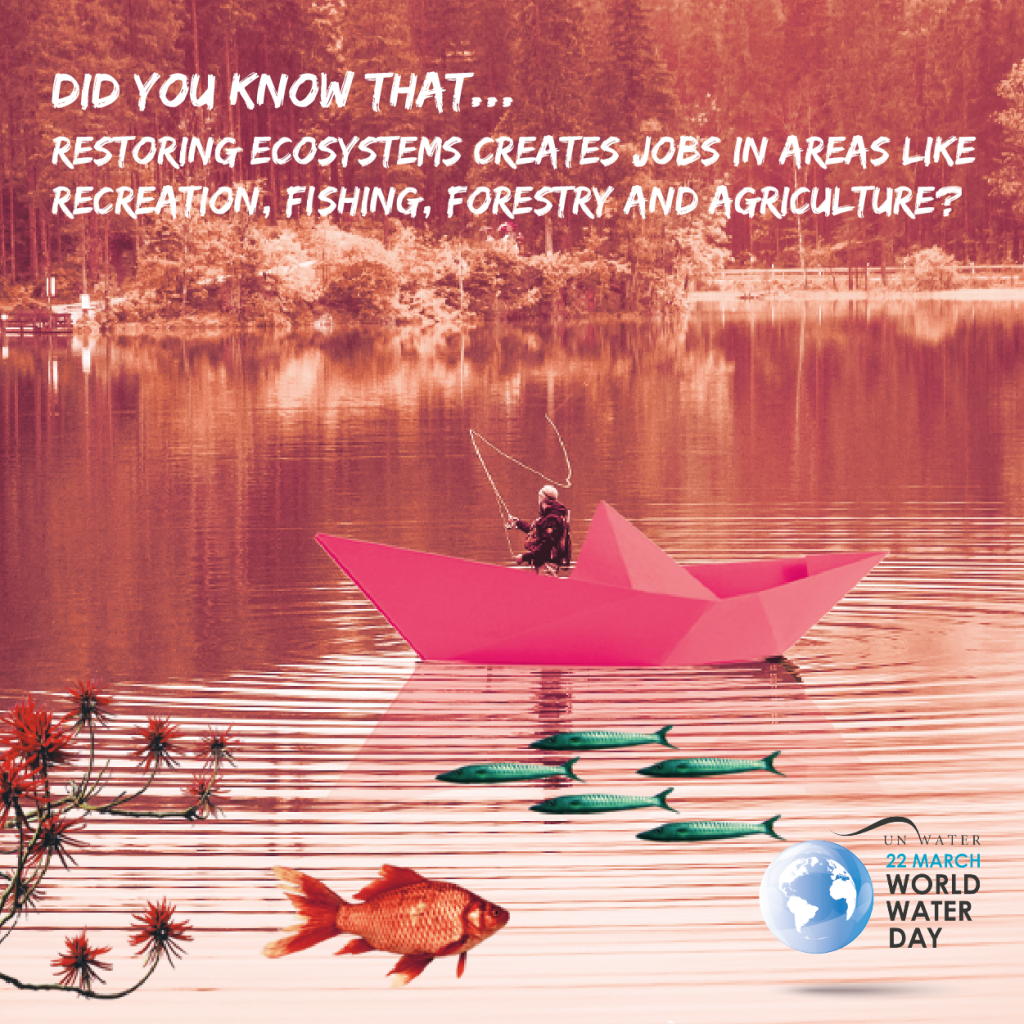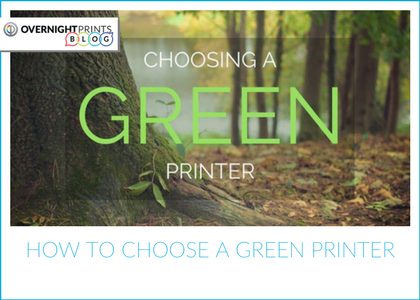Not a day goes by that we don’t need water – we use it to stay hydrated, grow fresh fruits and vegetables to eat, keep things clean, and so much more. This everyday necessity should never be a scarcity. Partnering with an online print provider that understands and values this precious resource should be a priority for any business owner.
In 1993, the United Nations (UN) General Assembly designated March 22 as World Water Day. This year’s theme is ‘Nature for Water,’ which encourages nature-based solutions that will help reduce floods, droughts and water pollution. This focus falls in line with Goal 6 of the UN’S 17 Sustainable Development Goals, and is specifically geared toward achieving sustainable management of clean water by 2030.
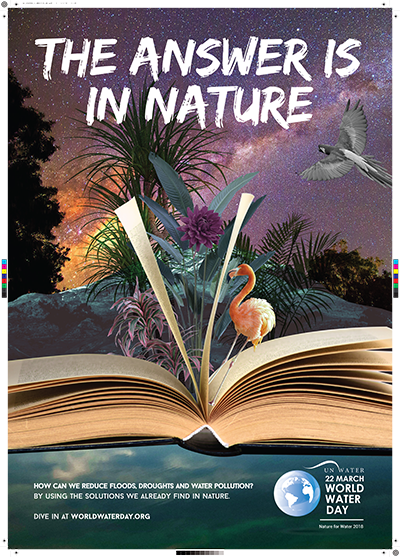
Small business owners, together with an eco-friendly print partner, can help move up that projection by adopting more sustainable printing practices. Several printing methods offer environmentally friendly choices that can help save our world’s water supply including waterless printing and green printing.
What is the Difference between Waterless Printing and Green Printing?
Waterless printing is an offset print process that uses plant-based oils instead of water, making it one of the greenest ways to print. Meanwhile, green printing minimizes the use of natural resources by recycling and reusing paper, and reducing waste.
Both printing processes move away from traditional methods to produce high quality prints that are less harmful to the planet. To find online printing companies that have implemented these sustainable practices, look for certifications like the ones below.
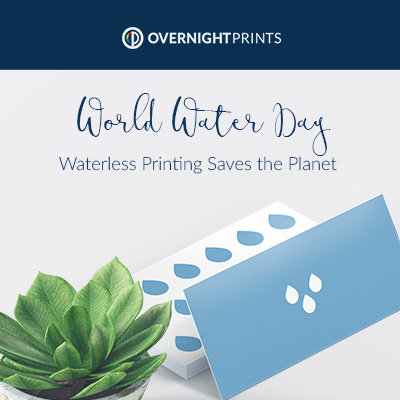
Waterless Printing
Traditionally, printing is a huge consumer of resources that include chemicals, water and energy. Many large presses can consume hundreds of thousands of liters of water per year as part of the normal printing process.
Responsible online printers like Overnight Prints turn to waterless printing, a temperature-controlled process, to produce high-density, saturated color with less dot gain much quicker than conventional lithographic methods. Instead of mixing an ink and water solution, a special silicon-coated printing plate takes its place.
This not only eliminates the use of water, but also any toxic “fountain solution” from the tainted water and toxic chemicals left over after the ink is transferred to paper.
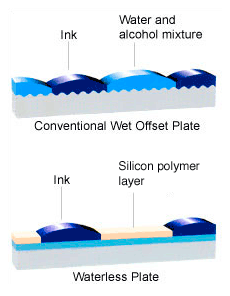
Another plus is lower dot gain, which produces printed materials that look darker than intended. This occurs when individual dots expand in diameter during the printing process. While adjustments can be made to the digital files to compensate for potential dot gain during printing, proper prepress preparations greatly minimize the effect. The absence of water in waterless printing produces lower dot gain, resulting in clearer printed images.

This temperature-controlled printing method also registers color onto paper much faster and more consistently, and so reduces the need for make-readies, a practice of making extra prints in order to test the quality of the ink transfer. As a result, waterless printing reduces paper waste and delivers 30-40 percent paper savings compared to conventional printing methods.
Benefits of waterless printing:
- More consistent color
- Better color saturation
- Lower dot gain
- Faster “make-ready” print time
Waterless printing is a resourceful alternative to traditional printing methods that conserves water and improves the final print product. By opting for this environmentally responsible printing method, online printers are proactively contributing to making our world a greener place to live.
Green Printing
The number of trees cut down and turned into paper each year is staggering. Depending on the type of paper, it takes approximately eight to 24 trees to make one ton of paper, or about 200,000 sheets, often used daily in offices and other businesses.
Considering the long-term effects that printing could have on the environment, web-to-print company Overnight Prints makes it a top priority to operate as an environmentally conscientious online printer. As a champion of green printing, the company actively invests in renewable paper supplies so that every print product is green.
Paper supplies that come from responsibly managed forests are renewable, reusable and recyclable. These forests not only provide an eco-friendly option for printers, but also help protect the natural ecosystem and fight climate change.
A certified paper supplier gives back by replanting trees and combating global warming. Online printing companies that work with certified vendors effectively contribute to the world’s ecological, economic and socio-cultural functions.
Major certification organizations:
- Sustainable Forestry Initiative (SFI): A fully independent North American certifying body and organization dedicated to sustainable forest management and conservation.
- Forest Stewardship Council (FSC): An international, volunteer non-profit that sets standards for responsible forest management.
- Programme for the Endorsement of Forest Certification schemes (PEFC): A non-profit, non-governmental organization promoting responsibly managed forests through independent third party certification.
Partnering with certified paper suppliers like Veritiv and Spicers Paper allows companies like Overnight Prints to offer 100 percent post-consumer recycled paper, specially milled for its customers without harmful chlorine or chlorine derivatives. This process helps reduce VOC emissions and minimize paper waste.
Processed Chlorine Free paper is processed without any exposure to chlorine. Paper processed using chlorine or chlorine derivatives as bleaching agents release toxic pollutants that end up in the food chain and are eventually consumed by humans. Instead, the chlorine-free process sources virgin timber or unbleached, recycled fiber for paper manufacturing without any chlorine-based bleach.
In addition to FSC certified paper, green printing processes significantly reduce fossil energy consumption and CO2 emissions. Special low waste printing presses at Overnight Print’s Louisville, Ky., facility, for example, use organic ink and natural solvents, and are the lowest emitting manufacturers among the neighboring states of Kentucky, Ohio and Indiana.
Partnering with the right online print provider can help save the world’s future water supply. Help find the answer in nature for your printing needs with these quick tips on How to Choose a Green Printer.

